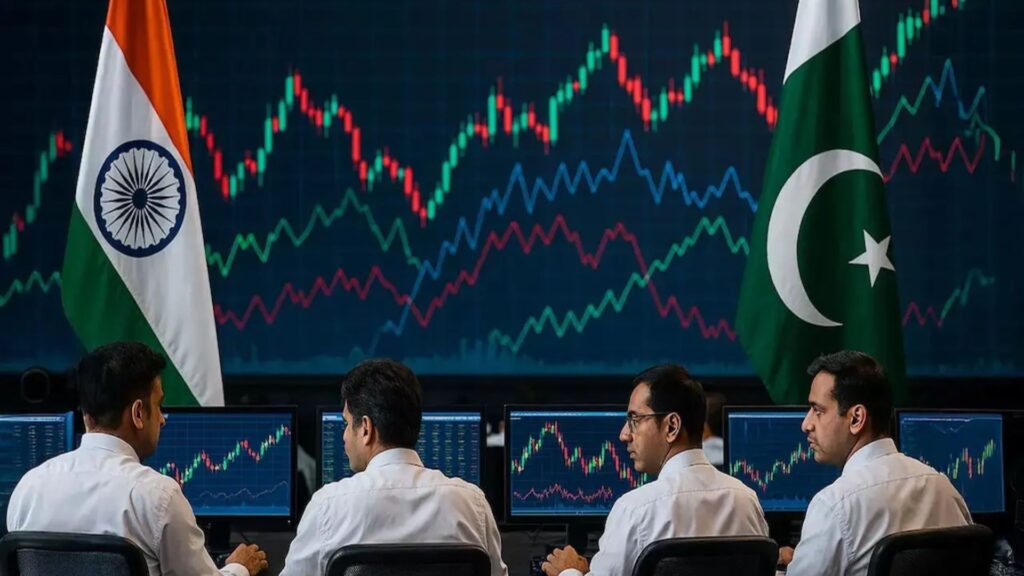
The Indian stock market closed the past week in negative territory, ending its three-week winning run—its longest of the year—amid a sharp correction driven by heightened geopolitical tensions between India and Pakistan. The decline came after a brief period of consolidation, reflecting a shift in investor sentiment as market volatility intensified.
Both key benchmark indices, the Sensex and Nifty 50, declined by around 1.4% over the week. The BSE Sensex shed 1,047 points to end at 79,454, while the Nifty 50 slipped 338 points to settle at 24,008. On Friday alone, both indices fell by 1.1%, with the Nifty managing to stay above the psychologically important 24,000 mark, while the Sensex closed below the 80,000 level.
Market sentiment turned risk-averse following military action by India, which conducted targeted strikes on nine terror locations in Pakistan-occupied Kashmir and Pakistan as part of ‘Operation Sindoor.’ This escalation in tensions led to a notable uptick in the India VIX, the volatility index, which surged for the eighth consecutive session to reach its highest level in over a month.
Earlier optimism stemming from progress on the India-UK Free Trade Agreement and strong Q4 earnings from some index heavyweights was overshadowed by geopolitical concerns. Analysts pointed out that despite the unfolding nature of the conflict, markets are hopeful for a swift resolution, citing India’s strategic and economic strength.
Looking ahead, investors will turn their attention to a range of market-moving factors. These include Q4 earnings for FY25 from major companies such as Tata Steel, Bharti Airtel, PVR INOX, Cipla, GAIL, Hero MotoCorp, Lupin, BHEL, Godrej Industries, and Tata Motors. Macroeconomic indicators like the Consumer Price Index (CPI), Wholesale Price Index (WPI), and trade data will also be closely tracked for clues on inflation and economic momentum.
On the primary market front, action is expected in the SME segment, with two new IPOs set to open for subscription and two listings anticipated. No new mainboard IPOs are scheduled for the week so far.
Foreign institutional investors (FIIs) remained net buyers, investing nearly ₹5,087 crore into the cash segment, while domestic institutional investors (DIIs) contributed ₹10,450 crore. However, foreign portfolio investment (FPI) trends in May show a mixed picture for emerging markets, with India and several others witnessing notable outflows.
Globally, investor attention remains fixed on the US Federal Reserve’s monetary stance. Fed officials have expressed concern that rising tariffs could heighten inflation risks and lead to job losses. Still, signs of renewed US-China trade talks and a rate cut by the People’s Bank of China helped lift global sentiment somewhat.
Technical indicators suggest a cautious outlook for the Nifty 50, which is currently trading near key moving averages. Analysts warn that a clear breakdown could see the index retreat toward the 23,200 level.
In summary, the Indian stock market faces a critical week ahead, with geopolitical developments, macroeconomic data, corporate earnings, and global trends likely to drive volatility and investor behavior.






